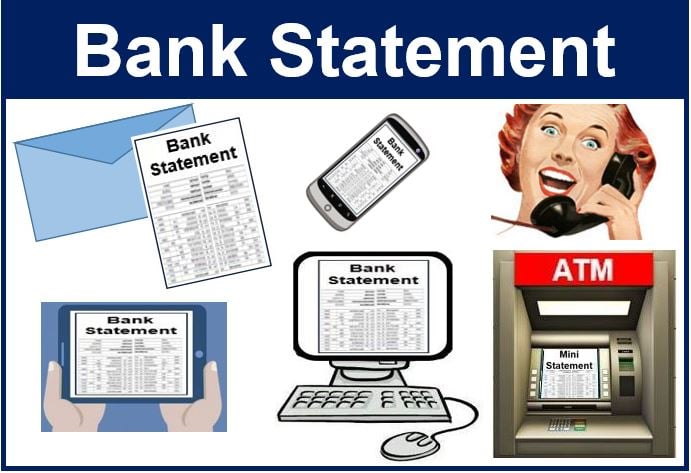Bank statement – definition and meaning
A bank statement or account statement is a document that lists a bank customer’s financial transactions. It lists the transactions over a given period. The bank displays the statement either on paper or in electronic form.
Most statements cover a one-month period. The bank prints the opening balance from the prior month at the top and the net of all transactions below it.
Additionally, it prints the closing balance for the current month at the bottom. Subsequently, it will place that month’s closing balance at the top of the next month’s.
Traditionally, banks have posted customer’s statements every month. They are either sent to the account holder’s address or kept at the bank’s nearest branch for pick-up.

Bank statement – becoming paperless
There has been a gradual shift towards paperless, electronic statements. Customers who have online banking can view bank statements on their laptops, tablets, or smartphones.
Some banks offer direct statement downloads into the holder’s accounting software. In other words, customers today can see their bank statement on their banking app.
Most ATMs offer the option of viewing a mini-statement on the screen or obtaining a printed version. We also refer to this mini-statement as a transaction history. ATM stands for automatic teller machine.
Although British people understand the term ATM, the expression cash machine is more popular.
Additionally, people with a telephone banking service can listen to a mini transaction history.
According to Collins Dictionary, a bank statement is:
“A statement of transactions in a bank account, especially one of a series sent at regular intervals to the depositor.”
Always check your bank statement
You should carefully check your bank statements. You should also hold on to them for your own records.
Many of us trust that banks will always get it right. In fact, the number of mistakes they make is surprisingly high.
According to Ernst & Young, 29% of companies said they had detected an error with their primary bank during the previous 12 to 24 months. Furthermore, 57% of the survey respondents said they were not ‘highly satisfied’ with the resolution.
Ernst & Young added:
“This poor service is pushing businesses to look for alternative banking options – be that moving their primary accounts to a rival bank or moving certain services to a non-bank, according to EY’s global commercial banking survey, Advancing service in a digital world.”
You should check carefully for incorrect or transposed numbers, as well as transactions that you had not authorized.
The US Department of the Treasury says that account holders have 60 days to contact their bank.That is, sixty days from the date a problem or mistake appears on their bank statement.
On its website, the Treasury also says:
“Notify the bank in writing and keep a copy for your records. You should also review the Account Agreement you received when you opened the account.”

